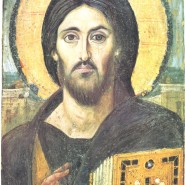who had less than she did, and won over the settlers, for whom she became a trusted counsellor. In 1657, she organized the erection of a chapel that would serve as a place of pilgrimage in honour of Mary. The project was completed the next year. From that time, the chapel has housed the miraculous statue of Notre-Dame du Bon-Secours (Our Lady of Good Help), which Baron de Fancamp had given Marguerite in 1672.
In 1658, Maisonneuve gave her a community stable in which to start her school. She began day classes and then a boarding school for the daughters of colonists as well as girls from the Iroquois First Nation. She formed a religious community for young women (today the Congregation of Notre Dame). She went back to France in 1659 and again in 1671, recruiting companions. She obtained letters patent from King Louis XIV. In 1676, Bishop Laval recognized her community as a secular institute. As she set out on a third voyage back to France, the Bishop refused to allow her to recruit further companions from Europe. Upon her return, she began to admit the first Canadian women, including two Iroquois.
Marguerite and her companions taught catechism and basics of literature, as well as virtue, etiquette and the love of work. She started up a needlework workshop and taught household arts to prepare the students for their role in family life. The “filles du roi”, the so-called “King’s Daughters” who came from France with dowries from the king, were welcomed by Marguerite’s companions at the Saint-Gabriel Farm, which offered them shelter and welcome as they became acquainted with the eligible men in the colony.
She began to send her companions in pairs to new parishes to start classes for the children of the settlers. In 1697, the Most Reverend Jean-Baptiste de Saint-Vallier, who succeeded François de Laval as Bishop of Quebec in 1685, recognized the community as “daughters of the parish”.
Marguerite Bourgeoys died January 12, 1700, and was acclaimed as the “Mother of the Colony”. She was canonized on October 31, 1982, by Saint John Paul II.
Her Spirituality
Marguerite Bourgeoys was influenced by the 17th-century French school of spirituality. She shared its sense of the mystical, its orientation toward teaching, and its apostolic aspirations to missionary activity. The spirituality is greatly indebted to Saint Teresa of Avila, the mystic who reformed the Carmelite Order, and to Saint Philip Neri, who promoted a return to the model of the early Church. Other key figures were Saint François de Sales, Cardinal Bérulle, Father Jean-Jacques Ollier, who founded the Sulpicians (the Society of Saint Sulpice), Saint John Eudes, and Saint Vincent de Paul; all promoted reform of the Church in France and proposed to laypersons such as Marguerite the demands of the love of God and the practice of charity toward the poor, without cloister or religious habit.
The love of God and neighbour serves as a summary of Marguerite’s life. Just a year before her death, she would write, “It is true that what I have always wanted most, and most ardently desire, is for the great teaching of the love of God above all things and the love of one’s neighbour as one would be loved, to be engraved on all hearts.” She wanted for her community “the true spirit of hospitality and love which was the glory of the first Christians,” when they “were of one heart and mind in God,” and “held everything in common.”
Marguerite expressed in New France the spirituality that had nourished her in Troyes, honouring in a particular way the visitation of Mary. She sought to be a disciple of Jesus in the same way

